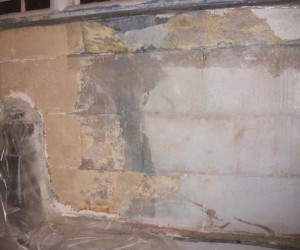The Enduring Attraction of Renovating Natural Stone

Restoring stone surfaces is an expertise that combines heritage, craftsmanship, and eco-friendliness, injecting renewed spirit into areas that have endured the trial of history. From historic structures to contemporary houses, stone has long been a popular option, delivering both aesthetic appeal and longevity. However, with the flow of time, even the strongest stone can show indicators of wear, fading, and degradation. This is where the benefit of stone restoration comes into play. It not only improves the look of your setting but also helps preserve a piece of our common heritage.
If you're thinking about a stone restoration project, you may end up curious where to commence. Is it the right moment to restore your stone surfaces? Understanding the aspects of the process is essential, and it can be overwhelming if you're not experienced to home restoration. Regardless of whether you're aiming to handle the project yourself or thinking about engaging specialists, knowing the guidelines can save you effort, expenses, and potential frustration. In this resource, we will delve into the different facets of stone restoration, including common mistakes to steer clear of, essential maintenance tips, and the significant effect renewal has on keeping our cultural legacy for future generations.
Best Resources for Reviving Heritage Homes
Restoring traditional homes requires careful attention of the materials used to ensure genuineness and longevity. Natural stone is commonly the primary choice for frontages, paths, and landscaping elements. Its durability and visual qualities smoothly blend with the historical architecture. When selecting marble crack repair sydney , it is essential to align the variety, finish, and hue to what was originally used, preserving the home's identity while dealing with any deterioration.
In addition to stone, lime mortar is a critical material for pointing and repointing masonry. Lime is breathable and enables moisture to escape, preventing damage to both the stone and the building. Its adaptability accommodates movement over time, making it more suitable to contemporary cement mortars that can hold moisture, leading to further decline. Understanding the properties of lime mortar makes certain that the renovation supports the authenticity of the first construction.
Wood also has a major role in the revival of historic homes, particularly for structural elements, windows, and entrances. Choosing the appropriate type of wood, ideally obtained from the corresponding species used historically, retains the appeal and functionality of the home. marble crack repair sydney , such as adequate sealing and coating, aids protect wooden components from the elements, ensuring they remain durable while enhancing the home's historical allure.
Is It Time to Restore Your Stone Surfaces?
Evaluating the condition of your stone surfaces is the initial step in figuring out whether repair is necessary. Watch for signs of wear such as breaks, blemishes, or color changes. These issues not only detract from the aesthetic appeal of your space but can also weaken the stability of the stone. If you see any of these signs, it may be time to consider restoration to prevent further deterioration.
Another important factor to take into account is the historical age and heritage value of your stonework. If the stone surfaces are part of a old home or structure, restoring them can help preserve their original look. Many homeowners feel a sense of responsibility to maintain the cultural aspects of their properties, and restoring stone surfaces is a key part of that commitment. If your stonework has significance, investing in restoration can be equally a functional and emotional decision.

Ultimately, evaluate how often the stone surfaces are utilized and exposed to the elements. High-traffic areas and outdoor stonework tend to sustain more damage over time due to wear and exposure to weather conditions. If you find that maintenance on your stone surfaces has been neglected and they are showing visible signs of damage, it is wise to act sooner rather than afterward. Timely restoration will not only improve the look of your space but also extend the durability of your stone surfaces.
Do-It-Yourself vs. Expert Stone Restoration: Key Considerations
When considering stone restoration, one of the initial choices homeowners must make is if they should attempt the project themselves or engage a specialist. DIY restoration can be attractive due to the possible cost savings and the satisfaction of completing a job on your own. However, it requires a strong understanding of the materials, methods, and tools required for successful restoration. Many people underestimate the complexity of stone restoration, leading to subpar results that may compromise the aesthetic of the stone and compromise its integrity.
On the other hand, professional stone restoration solutions bring knowledge and experience to the table. Professionals are trained to handle various types of stone, from granite to marble, and know the particular techniques needed for each type. They are equipped with specialized tools and products designed for efficient restoration. Moreover, hiring a specialist can save hours and prevent costly mistakes, especially for extensive or complex projects. Their expertise of cleaning techniques, sealing processes, and repairs ensures a superior outcome.
Ultimately, the choice between DIY and professional restoration is based on the scope of the project and your comfort level with the work involved. For minor touch-ups and maintenance, DIY may be a reasonable option. However, for major restoration efforts, enlisting the help of professionals can ensure that the stonework is brought back to its original glory, preserving its cultural and artistic value.
